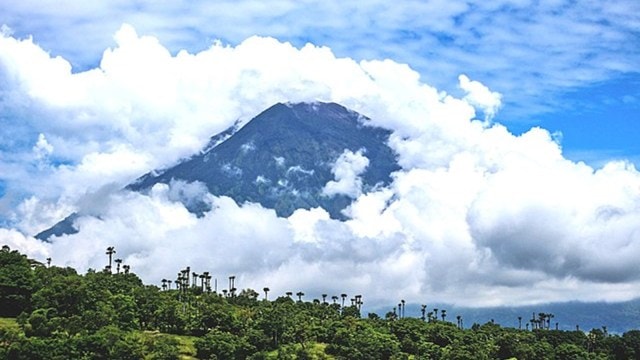📣 For more lifestyle news, click here to join our WhatsApp Channel and also follow us on Instagram
Flights to Bali resume after volcanic eruptions; find out how ‘vog’ impacts health
Volcanic smog, or "vog," poses risks to respiratory health, with potential long-term effects on the overall health of the body.
 Volcanic eruption in Bali, Indonesia.
(Source: Wikimedia Commons)
Volcanic eruption in Bali, Indonesia.
(Source: Wikimedia Commons)Flights to Bali have resumed after being grounded due to eruptions from Mount Lewotobi Laki-laki in Indonesia’s East Nusa Tenggara province. According to Reuters, the volcanic activity from November 4 to 13, 2024, led to the cancellation of more than 160 flights, with 91 cancellations occurring in a single day—the highest in the period. Bali’s Ngurah Rai airport general manager, Ahmad Syaugi Shahab, confirmed that flight operations are gradually normalising as conditions improve.
Located approximately 800 kilometers (497 miles) from Bali’s tourist hubs, Mount Lewotobi’s eruptions resulted in ash and smoke blanketing the region, producing “vog,” short for volcanic smog. But what exactly is vog, and how can it affect health, especially for tourists planning a trip to Bali?
Indianexpress.com spoke with experts to understand its health implications and safety measures you can adopt during your visit.
Dr Srivatsa Lokeshwaran, lead consultant and head of department of interventional pulmonology and lung transplant, Aster Whitefield Hospital, Bengaluru, said that volcanic smog is a form of air pollution caused by volcanic emissions, primarily sulphur dioxide. When this reacts with oxygen, moisture, and other atmospheric elements, it creates fine aerosols containing sulphuric acid and sulphate particles.
“Vog is commonly observed near active volcanoes but can travel significant distances depending on wind patterns,” said Dr Lokeshwaran. Even in moderate amounts, vog can irritate the eyes, throat, and lungs, especially in individuals with pre-existing respiratory conditions.
Dr Ravi Dosi, consultant, pulmonary medicine, Kokilaben Dhirubhai Ambani Hospital, Indore, concurred, saying that in the long term, exposure to volcanic smog can cause chronic respiratory diseases such as Chronic Obstructive Pulmonary Disease (COPD). “For patients experiencing acute symptoms, the effects are typically immediate and include coughing, difficulty breathing, chest discomfort, burning sensations in the eyes, and a sore throat,” said Dr Dosi.
Volcanic smog poses a potentially harmful and damaging threat to the lungs, which can have broader implications for the overall health of the body.
If the exposure persists for an extended period, ranging from a few days to several weeks or months, he said that it can lead to more severe health issues. Prolonged exposure often results in dyspnea (shortness of breath) during physical exertion and persistent coughing.
 Prolonged exposure often results in dyspnea (shortness of breath) during physical exertion and persistent coughing. (Source: Freepik)
Prolonged exposure often results in dyspnea (shortness of breath) during physical exertion and persistent coughing. (Source: Freepik)
What are some precautions people should take to lessen the damage?
Both experts suggested the following precautions to help counter the harmful effects of vog:
Restrict outdoor activities: Outdoor activities, particularly on high vog days, should be avoided.
Use air purifiers: Using air purifiers when inside the house can better the air quality, especially in high vog areas.
Use face masks: When stepping outside, N95 or similar masks should be worn to protect oneself from the harmful elements present in volcanic smog.
Keep doors and windows shut: Keep all windows and doors closed to avoid the entry of vog into the houses or other enclosed spaces.
*DISCLAIMER: This article is based on information from the public domain and/or the experts we spoke to. Always consult your health practitioner before starting any routine.*
📣 For more lifestyle news, click here to join our WhatsApp Channel and also follow us on Instagram





- 01
- 02
- 03
- 04
- 05






















